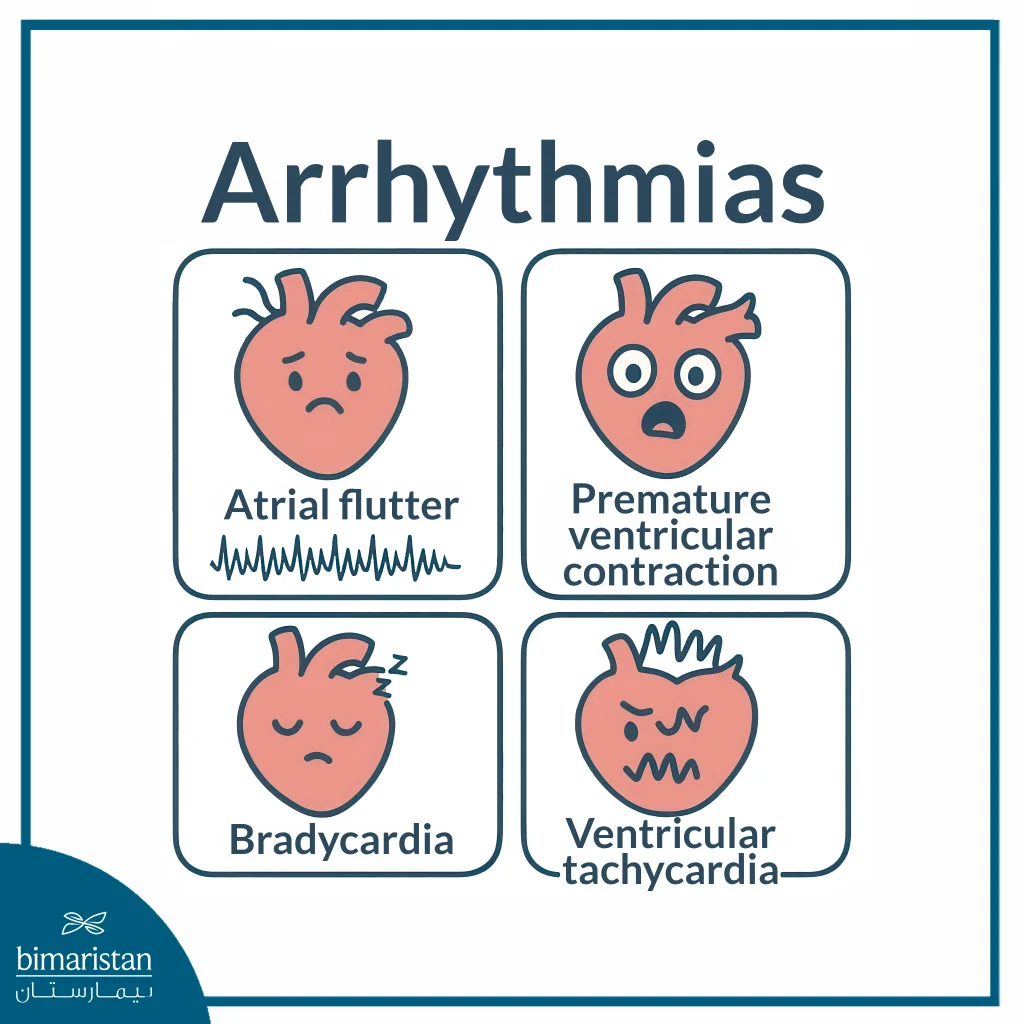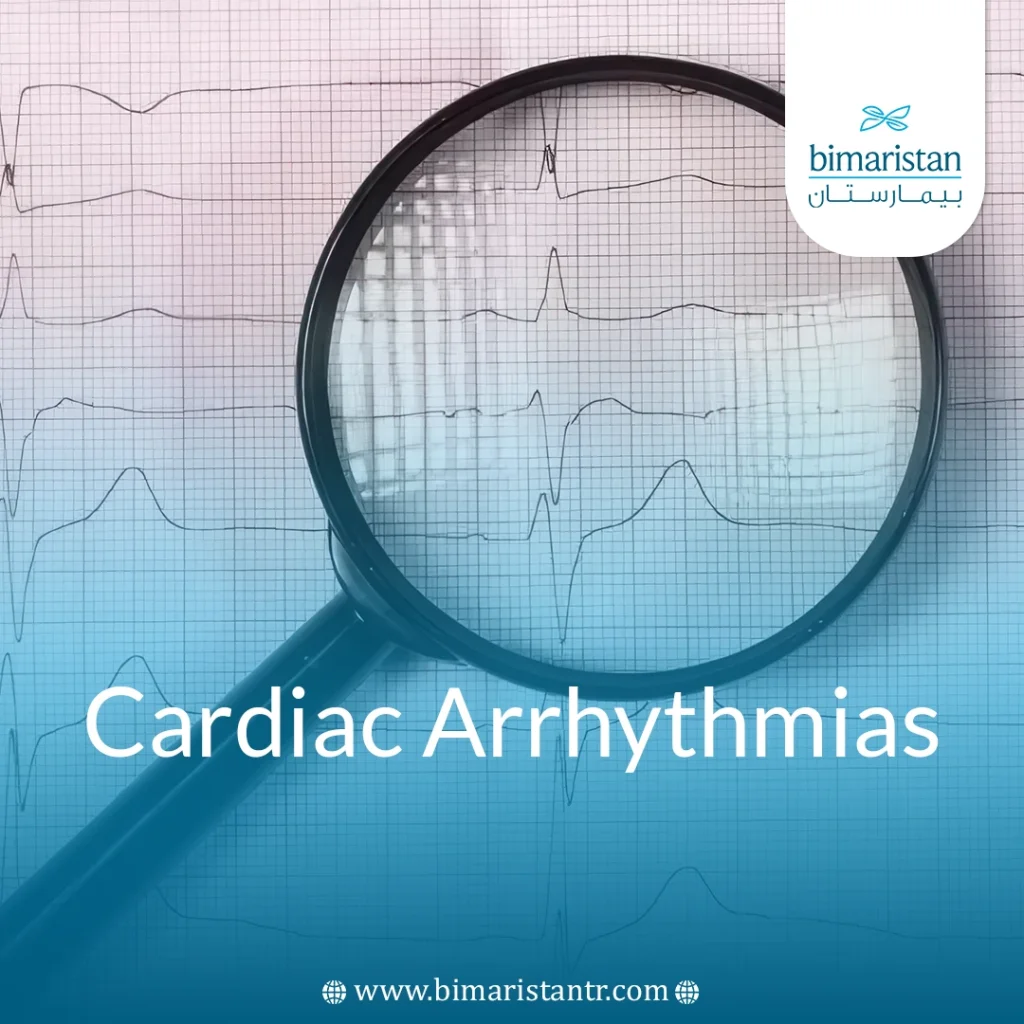The sinus node beats 60-100 times/minute to efficiently pump blood to vital organs, and any abnormality in this delicate electrical system may disrupt blood perfusion, affecting vital functions. Statistics show that 33.5 million people globally suffer from heart rhythm diseases, so early diagnosis and prompt treatment are the key to maintaining heart health.
What are cardiac arrhythmias?
The normal heartbeat aims to pump blood regularly through the body’s arteries at an appropriate speed and pace, but in arrhythmias, there is an abnormal change in the heart rhythm, whether it is acceleration or deceleration, causing an irregular pressure inside the body’s vessels and sometimes not providing the organs with an adequate amount of oxygen.
In some cases, heart rhythm diseases may manifest as a high pulse rate followed by a low pulse rate, causing the patient to feel uncomfortable as the pressure rises and falls alternately. Feeling that your blood pressure is constantly high, constantly low, or alternating between the two may indicate serious conditions, and you should see your doctor quickly.
What are the types of cardiac arrhythmias?
Cardiac arrhythmias are not limited to one type of disease, nor do they affect only a specific area in all diseases. Any of the chambers of the heart may be affected by one of these disorders, and they may be serious and life-threatening, or they may not be serious but cause inconvenience to the patient, the most important of which are the following:
- Atrial fibrillation: The atrium beats much faster than the ventricle, causing less blood to reach the ventricle than normal, so the ventricle tries to keep up with the atrium, which can raise the pressure in some cases.
- Bradycardia: The heart muscle slows down as a result of a nerve conduction issue or an issue with its nodes.
- Ventricular tachycardia: The ventricle beats too fast, beating several times before the atrium beats, causing the amount of blood flow out of the heart to slow, thus lowering blood pressure.
- Premature ventricular contractions: These are contractions that occur in the ventricles but not the atria, and are the result of electrical signals from the ventricle itself, as the ventricle does not respond to the sinoatrial node, but only to internal electrical signals, and if they continue for a long time in the day may lead to a slight drop in pressure.

What causes cardiac arrhythmias?
Cardiac arrhythmias can occur for several reasons, and they do not occur randomly or without a cause. Based on the cause, the doctor can identify the issue and work to treat it, and the most important causes of cardiac arrhythmias are:
- Coronary heart disease and valve disease
- Disruption of blood salts such as potassium and sodium
- Cardiomyopathy, diabetes, and severe stress
- Certain medications, alcohol, and caffeine
- Genetic and congenital factors
Who is most likely to be infected?
Elderly people are more likely to develop cardiac arrhythmias, due to the natural changes in the aging of the heart, and smokers or alcohol users are more likely to develop these diseases, due to the effect of smoking on breathing, which affects the heart, and the effect of alcohol on the liver, which also affects the heart.
Cardiac arrhythmias are common in heart patients and hypertensive patients because the circulatory system and heart have been pre-damaged and are predisposed to the condition. People with a family history of heart rhythm disease are also more susceptible to cardiac arrhythmias.
What are the symptoms of cardiac arrhythmias?
Cardiac arrhythmias patients feel many sudden symptoms that cause them to worry and fear, and make them feel uncomfortable. Among the most important symptoms of cardiac arrhythmias:
- Feeling palpitations or a sudden stop of the heart
- Dizziness, fainting, and unexplained fatigue
- Shortness of breath and occasional chest pain
In some cases, the patient may have an arrhythmia without symptoms, and this case is more dangerous than the appearance of symptoms, as the patient is unaware that he has the disease, which may make this disease take his life without realizing it, and this shows the importance of periodic review of the cardiac clinic for examination.
How are cardiac arrhythmias diagnosed?
With the development of medicine, there are many ways in which heart rhythm diseases can be diagnosed, one of the most important methods used:
- Electrocardiogram (ECG)
- Holter – 24-hour monitoring
- Echocardiography
- Cardiac stress tests or internal electrical studies
Each of these methods is used separately, and may be combined in some cases, but each of them has characteristics that allow it to detect certain diseases that another method cannot diagnose.
Cardiac arrhythmias are sometimes minor, but neglecting them can put you at unforeseen risks. With the development of accurate diagnostic methods and effective treatments, early detection is the key to a healthy heart. Do not hesitate to visit your doctor if you experience unusual palpitations or dizziness, as prompt action can prevent major complications. At Bimaristan Medical Center, we offer comprehensive care to accurately diagnose and treat cardiac arrhythmias, providing you with peace of mind.
Sources:
- American Heart Association. (2022). About arrhythmia.
- National Heart, Lung, and Blood Institute. (2021). Arrhythmia.

